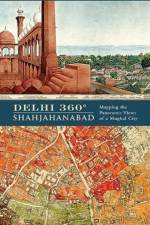av Jerry Losty
697
'I asked my soul: What is Delhi? She replied: The world is the body and Delhi its life.' So said Mirza Ghalib, poet in the court of the last Mughal emperor, Bahadur Shah Zafar. This special two-book slipcase set on Delhi's Shahjahanabad, famous for its imperial aura and history, as well as spiritual ambience, is a journey through the majestic Red Fort and the lanes of the living, planned and walled Mughal city on the banks of River Yamuna. Delhi 360°: A Unique Panorama in The British Library Collection. Made in 1846, the painting commonly known as 'The Delhi Panorama' by the famous topographical artist Mazhar Ali Khan is the finest artistic rendering of Shahjahanabad ever made. It also affords a unique glimpse into the heart of the imperial palace in the Red Fort before much of it was destroyed after the 1857 Uprising. The 360º view of Delhi along with its extraordinary detailing of the cityscape makes the panorama not just an important historical document but also the masterpiece of its artist. The 5-metre long panorama, in the collection of the British Library since 1981, along with all the Persian and Urdu inscriptions has never before been published complete. Its publication here is accompanied by essays that put the panorama in its historical and artistic context with a commentary on the inscriptions that brings it to life. Shahjahanabad Delhi's Shahjahanabad was first founded as an empire's capital at the glorious height of the Mughal dynasty; from this vantage point, it was also witness to the empire's decline and eventual extinction. The city would transform profoundly in the aftermath of the Revolt of 1857, with many of its neighbourhoods and buildings obliterated, and many of its inhabitants, including the last Mughal emperor, Bahadur Shah Zafar, having left, never to return. Fortunately, a mapmaker, working in 1846, painstakingly depicted important buildings, streets, and landmarks, providing a wealth of information about the city as it had evolved up to that time.

